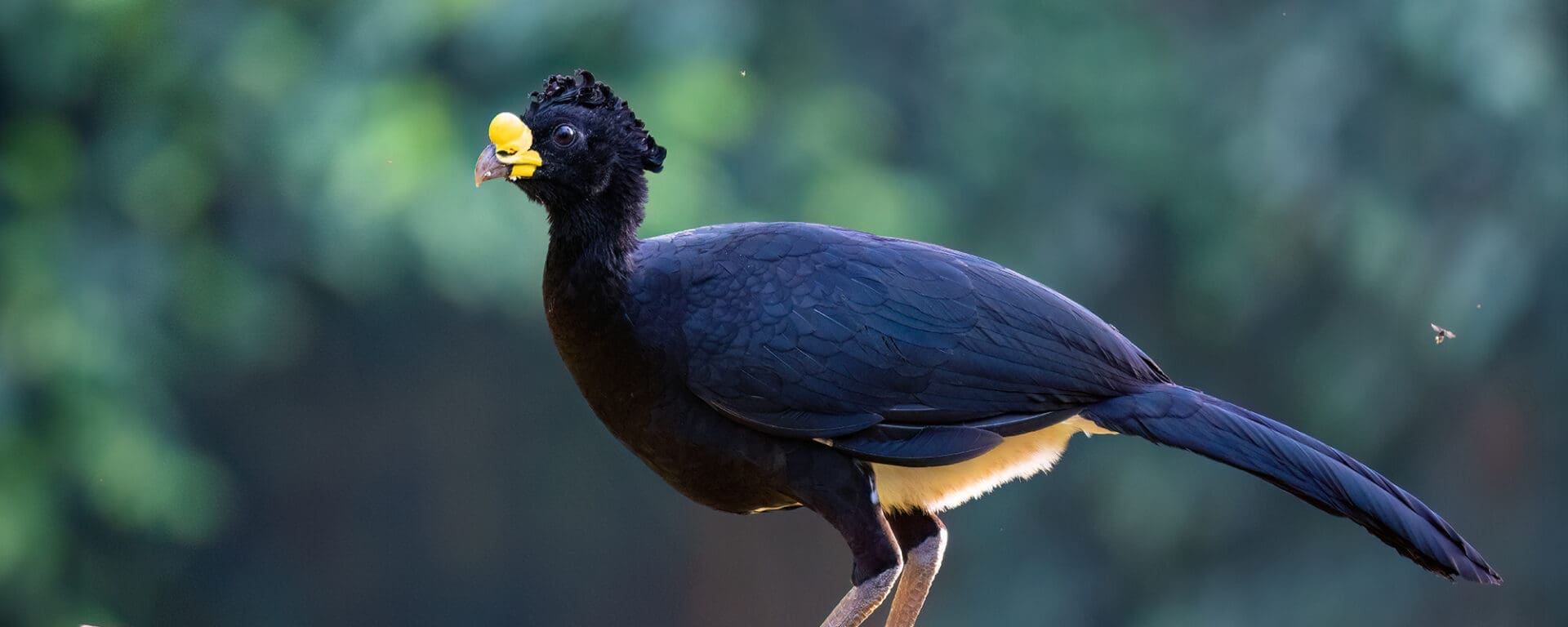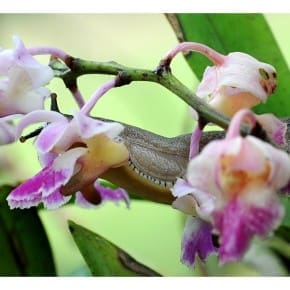Recap:
Birding in Costa Rica is hard work, finds Sandy on Day 3. Bleary-eyed from a late-night memory card mishap, he wakes to a day of immense promise. At Boca Tapada, a spirited hike to see the majestic King Vultures culminates in a rewarding morning. Dusk reveals magnificent Scarlet Macaws, capping off a productive day blessed with warm hospitality, delicious food, and unforgettable experiences in the heart of Costa Rica.
That night, I take special care not to repeat the mistake of performing an accidental file deletion. This time, I take out my primary memory card, put it in a memory card reader, connect to my computer and do it slow and easy, copying everything out. Only when I verify that everything has been copied and intact do I delete any photos from the memory card.
By the time I am done, I can barely keep my eyes open, thanks to the sleep deprivation from the previous night. I lie back on the bed and reach over to the bedside table to place my laptop and the memory card on it. The laptop settles on the table, but the memory card holder falls over the edge of the table. It is spring-loaded, and the moment it hits the floor, I hear the memory card being ejected. I don’t see it fall, so I can’t tell which direction it went.
I roll over to the edge of the bed and look at the floor. The memory card reader is there, but the card is nowhere to be found. It is a brand new 512-gig card, and I know I am dead in the water if I lose it. My next largest card is just 128-gigs and it wouldn’t last a couple of hours on burst mode, going by the amount of shooting that we have been doing the past couple of days.
I start by looking under the bed because I believe I had heard a little tink from under there when the memory card holder hit the floor. Nothing there. I look under the second bed — nothing there as well. Now the adrenaline kicks in and I am wide awake. There isn’t a lot of furniture in the room, so there are not many places for the card to hide. I start by looking under the tiny refrigerator, and then under the shelf, shining my flashlight. Nothing there as well. Just to be sure, I move both items and still find nothing. Under the bed, there is a layer of fabric. I am worried that the card went inside that layer of fabric, through a small gap between the bed and the frame. So I lift the bed, stand it up vertically, and pat down the underside of the bed. Nope.
Now, I am starting to panic. One part of me says I should just hit the sack and start with a clear head in the morning. Another part reminds me that I would delay the others if I left it for tomorrow. So I repeat the procedure with the other bed in the room, to no avail. I walk over to the front door and open it, wondering if the card had slid out through the tiny gap underneath the door. I move the curtain to the balcony door on the opposite side and don’t find anything there as well. Steaming from my ears, I lie down on the cold floor, shining the flashlight in all directions hoping it would catch something — absolutely nothing. I am now sweating both from the exertion and the adrenaline. Finally, once again I go back to the balcony door and slide the curtain. And there it is, nestled in the groove of the sliding door, the black bottom side facing the room, well concealed against the black frame of the sliding door.
Damn you, memory card!
It is almost 1 AM. We are to have an early start tomorrow. I crash, after having inserted the card safely into the camera and ensuring that it works.
Before I know it, it is 6 AM. We need to get to the cafeteria early for breakfast. I notice that my left forearm is severely itchy, and I blame it on crawling on the floor the night before. Outside, it is foggy. Pranav is already out and about, having spotted a Bananaquit (Coereba flaveola). But there is just not enough light for photography. Murukesh joins us, but he is not quite himself as he seems to have misplaced the mount-cap of his rented Z8 camera somewhere. Orlando is waiting for us, with the van back to its best. We drive up to the cafeteria. Ericka the superwoman is there, all smiles. She has been the sole hostess at the property for over three years — we wonder she manages to stay so cheerful all the time.
Breakfast is the usual comfort food: orange juice, gallo pinto, eggs, fruit, and fried plantain. From the cafeteria, we see mist enveloping the mountains across the river. Orlando pours a pink liquid over his fruits. I notice a jug with the stuff on our table. I pour some over my papaya slice and find that it is a delicious flavored yogurt. After breakfast, we pick out lunch from the menu in advance and head out to Edward’s place.

Edward is up and ready, wearing a Royal Flycatcher shirt this time. It is slightly chilly, like up in the Appalachians on summer mornings. We have the usual suspects flocking at the feeder: Euphonias, honeycreepers, tanagers. We see a flash of red and a familiar all-red bird appears in the bushes.
“Summer Tanager (Piranga rubra)!” I hiss. These birds spend their summers in North America and we haven’t got a lot of great shots of them. “They don’t usually come to the feeder,” says Edward. He steps away for a moment and the summer tanager flies right into the perch near the feeder. It sits there in the open for a few seconds and takes off, without even pecking at the plantains. When Edward returns, we show him the pictures, and he says, “Lottery!”

I lean on the railing to get some good angles, using my left forearm for support. Edward taps my shoulder: “Don’t lean on that!” He points to the railing and I take a close look. Tiny ants, half the size of the smallest ones we usually get to see, are scurrying about on the railing “Allergies!” he says. That explains the annoying itch.
There is a cacophony on a tall coniferous tree. Four birds, possibly Great Kiskadees (Pitangus sulphuratus), are making a ruckus. A Chestnut-headed Oropendola (Psarocolius wagleri) lands on the feeder, pecks around, and leaves. The Yellow-throated Euphonia (Euphonia hirundinacea) and its cousin, the Olive-backed Euphonia (Euphonia gouldi) tease us, not perching anywhere. These birds, when they come out in the open, appear to keep their heads tilted slightly as if to check for predators coming from above. Another Green Honeycreeper (Chlorophanes spiza) appears, but only the female is interested in being photographed.
A bird appears in the bushes that looks like a kiskadee and I ignore it. “Boat-billed Flycatcher (Megarynchus pitangua),” says Edward. I am reminded of the rap on my head that I got from Beej years ago at Parambikulam, where I nearly walked past a lifer thinking it was a drongo, only to be corrected by him; it was a drongo-cuckoo. I make up my mind to shoot every kiskadee that comes my way just because everything looks so much alike.
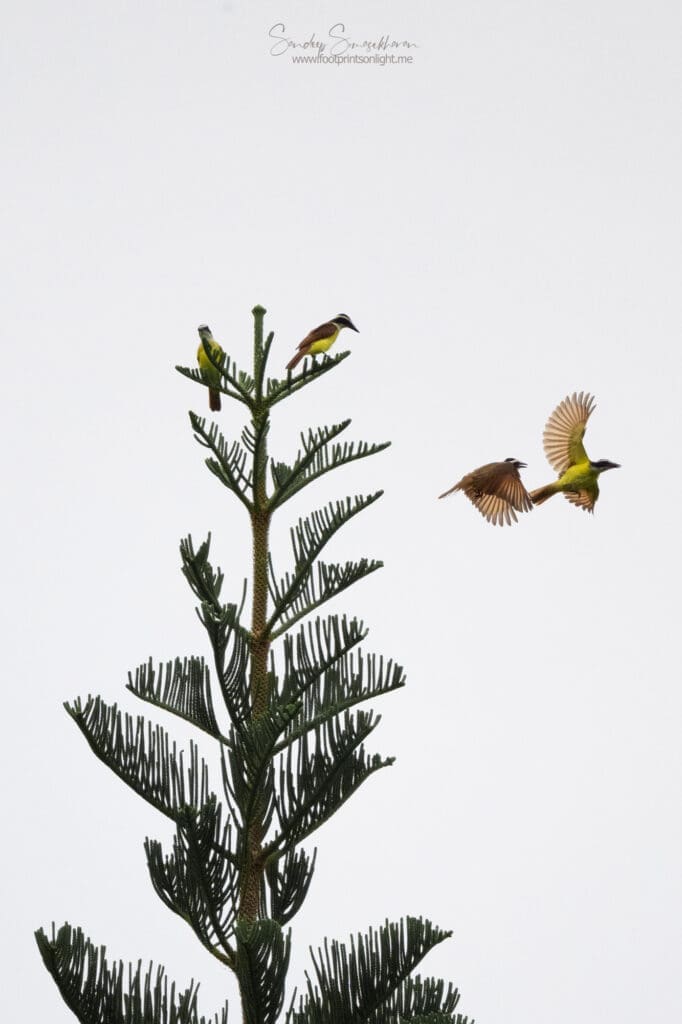
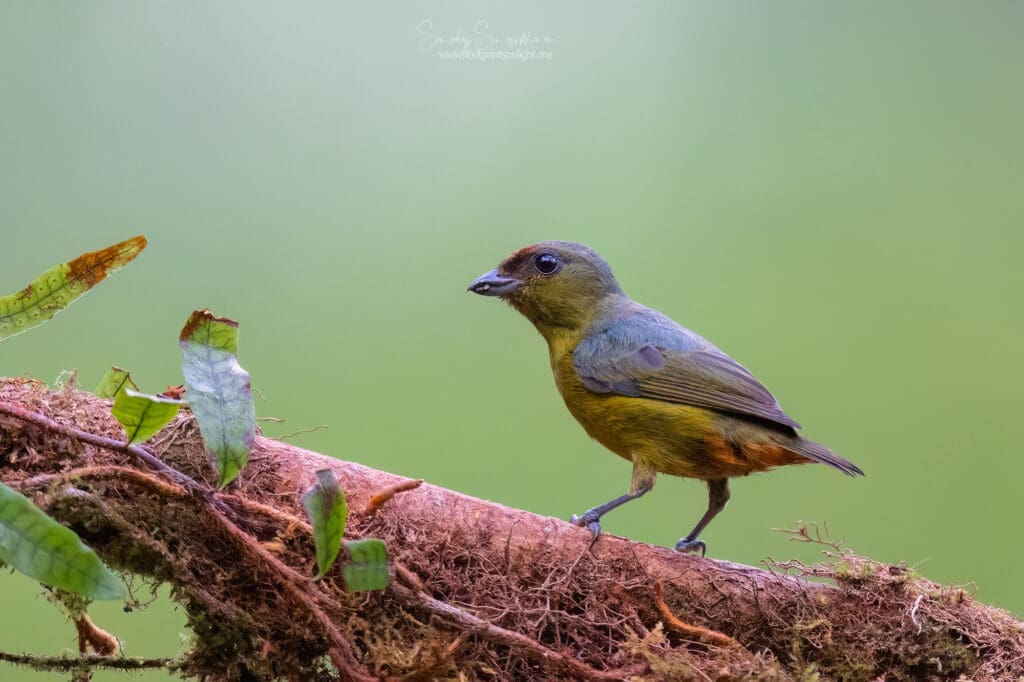
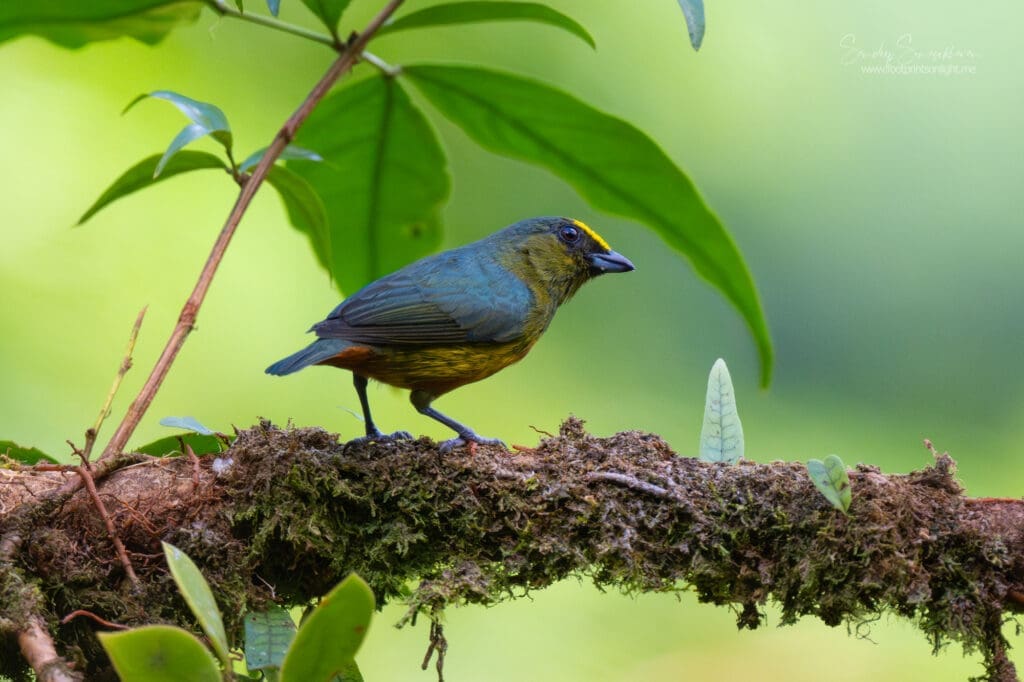
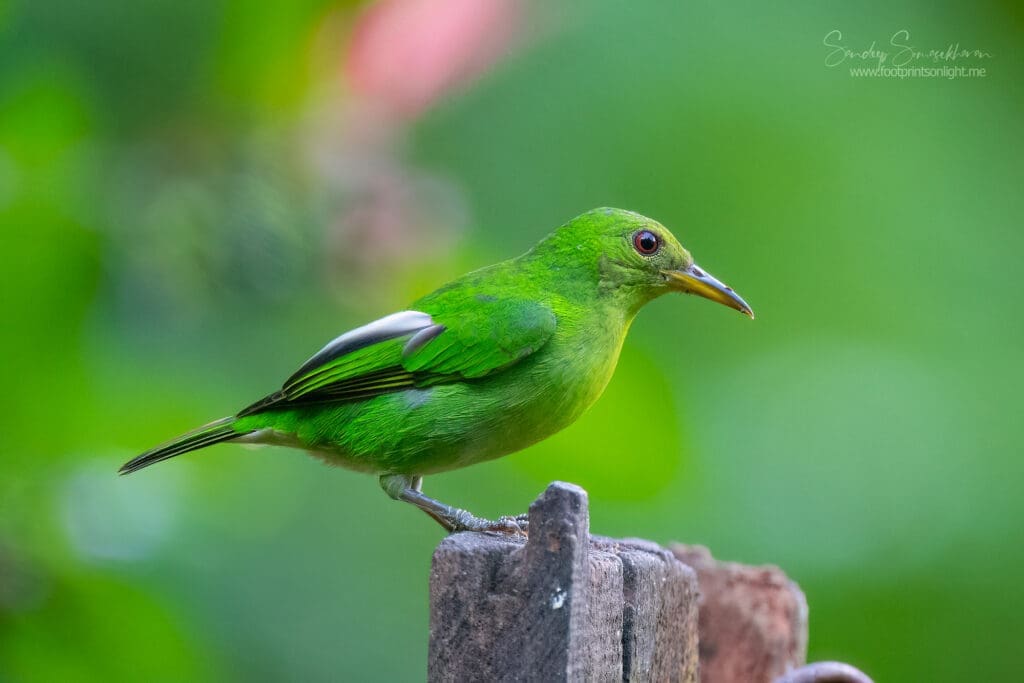

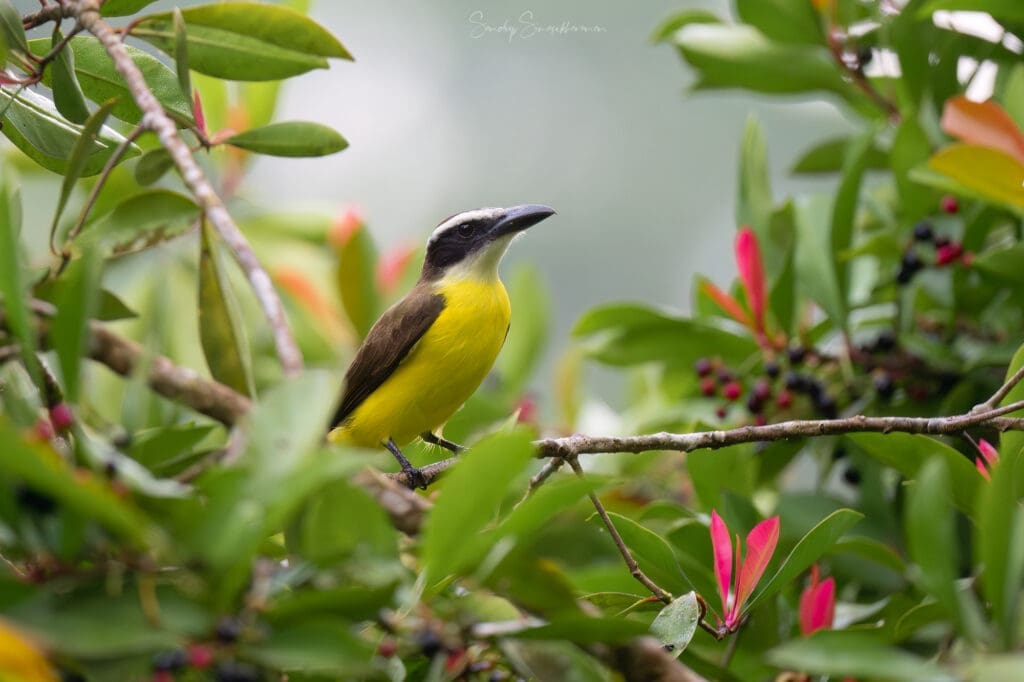
We linger till noon at the feeder, as the light is nice and soft thanks to the mist and the clouds. For lunch, we head back to Boca Tapada. On our way, we see a raptor perched on a dead tree and stop. It is the Crested Caracara (Caracara plancus) , a handsome bird that is quite abundant in Texas but not in North Carolina where we live. We stop for a few shots, and the caracara takes off, letting us have a good look at its underwings.


Back at the cafeteria, we see a boy and a girl playing with the dog Reina. Murukesh spots a massive iguana on a tree on the river side, resting on a horizontal branch, its tail hanging down as a jaguar’s tail would. For lunch we have chicken, gallo pinto, and raw plantain mashed into disks the size of small pancakes and deep-fried. We head down to the cottages for a short break. An hour later, as we gather under the java apple tree, we meet a couple vacationing at the lodge — a man of Punjabi origin and his British wife, parents of the kids we saw earlier.

The evening is supposed to be spent at a workshop belonging to one of Edward’s friends. Edward meets us at the lodge and we drive in the direction opposite to his place. On the way, we see a hawk sitting by the side of the road. “Roadside Hawk (Rupornis magnirostris)“, says Edward. More lazy naming. As we step out of the car for photos, the bird gracefully swoops towards another perch overlooking a valley. My leg gets caught in some loose barbed wire and Edward helps me get unentangled. That could have necessitated a ride back to the city for a tetanus shot had it not caught my thick canvas trousers. Back in the van, we ask Edward what we could expect at the new place. “Hummingbirds and toucans”, he replies. His friend has a multi-flash setup there, and he would help us get hummingbird shots with flash. I have never tried flash on birds before, and am excited about it.
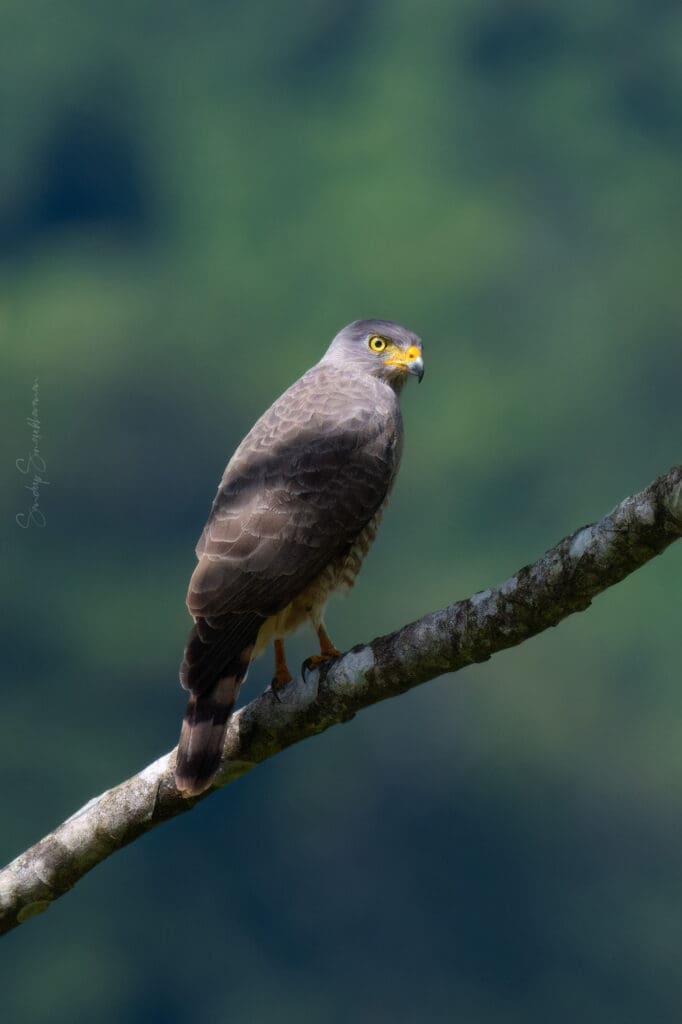

This house is petite, as are most houses in Costa Rica, with an L-shaped roofed porch around the house and a feeder in the front. Since only one person can use the multi-flash setup at a time, we let Murukesh shoot. Pranav and I settle down in front of the feeder. Murukesh introduces himself to everyone as “Bala”, short for his last name Balasubramanian. Edward calls him “Bapa” and the rest of us laugh about it. It turns out to be an excellent session as we get keepers of a Green Honeycreeper (Chlorophanes spiza), Brown-hooded Parrots (Pyrilia haematotis), and a very cooperative Yellow-throated Euphonia (Euphonia hirundinacea), along with our regular tanagers and honeycreepers.
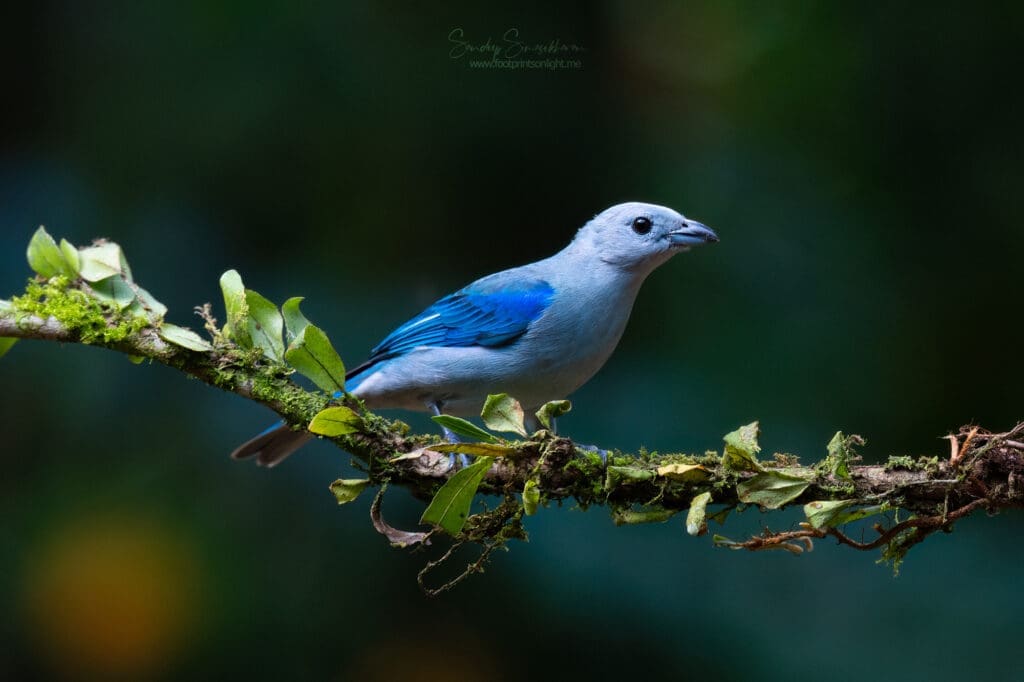

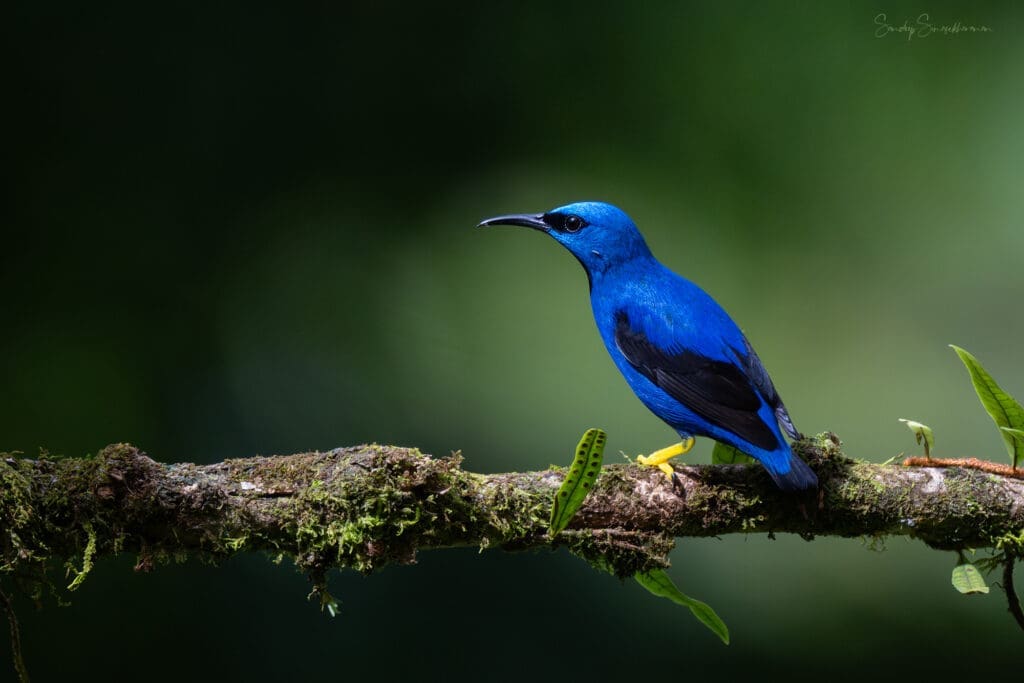

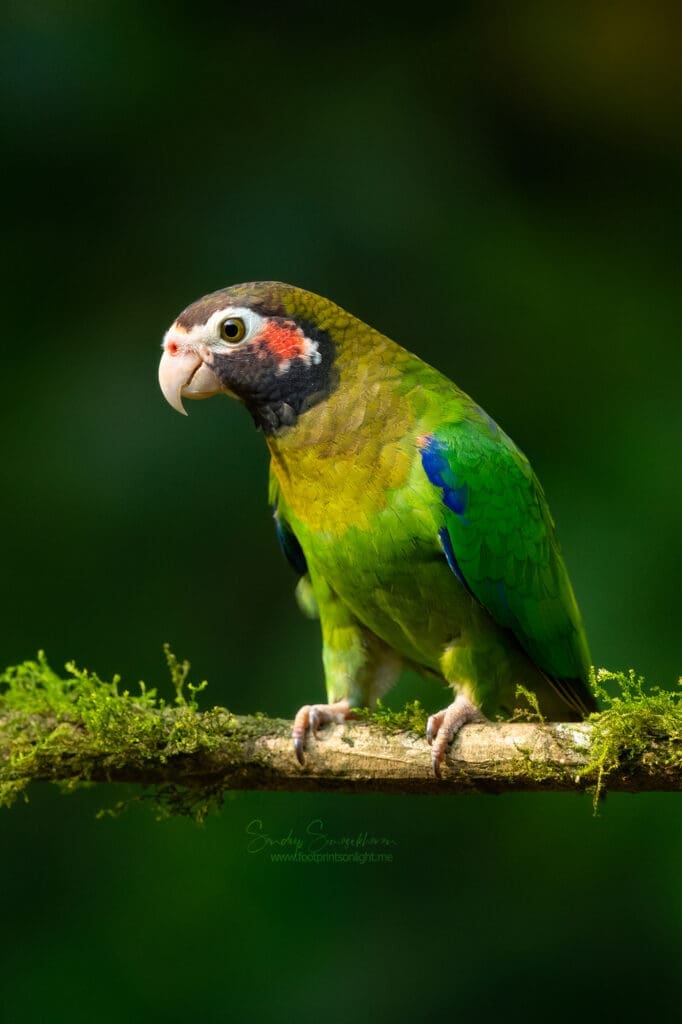
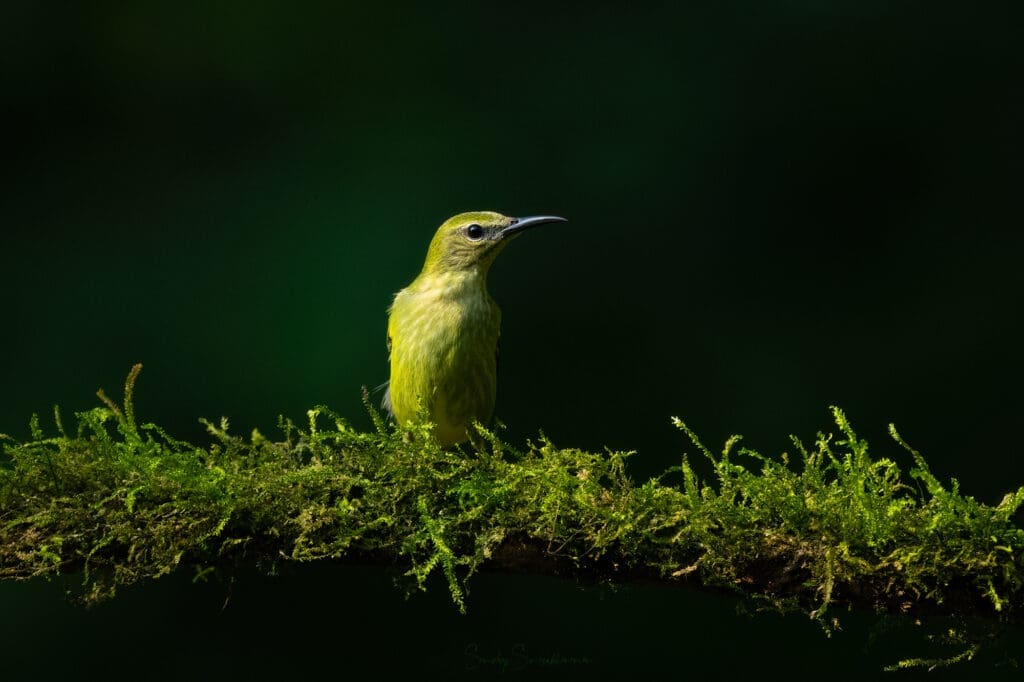
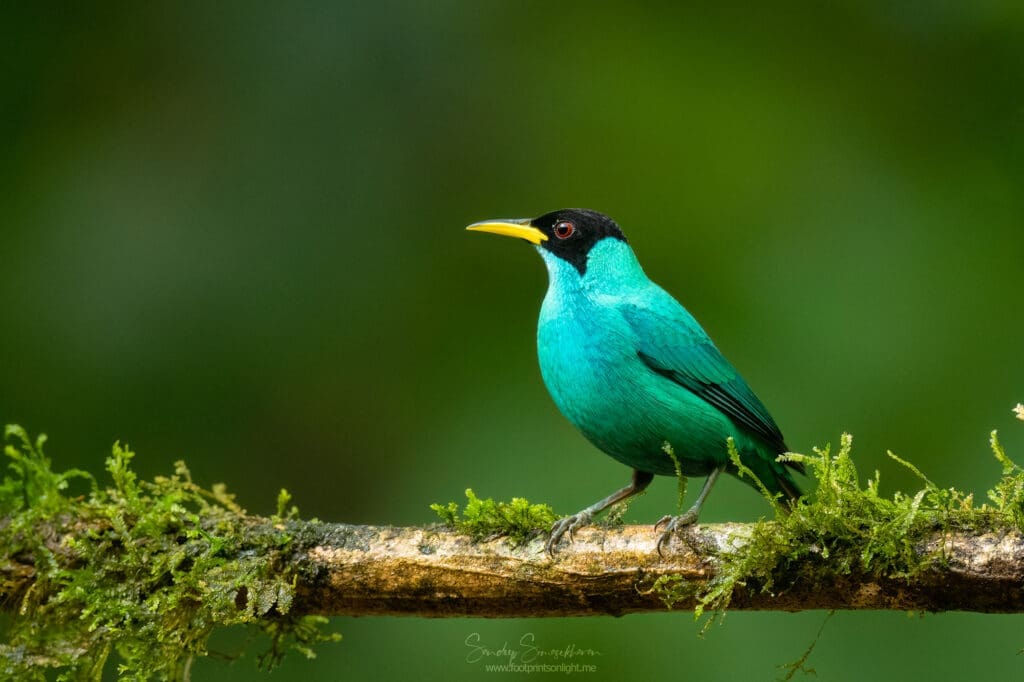
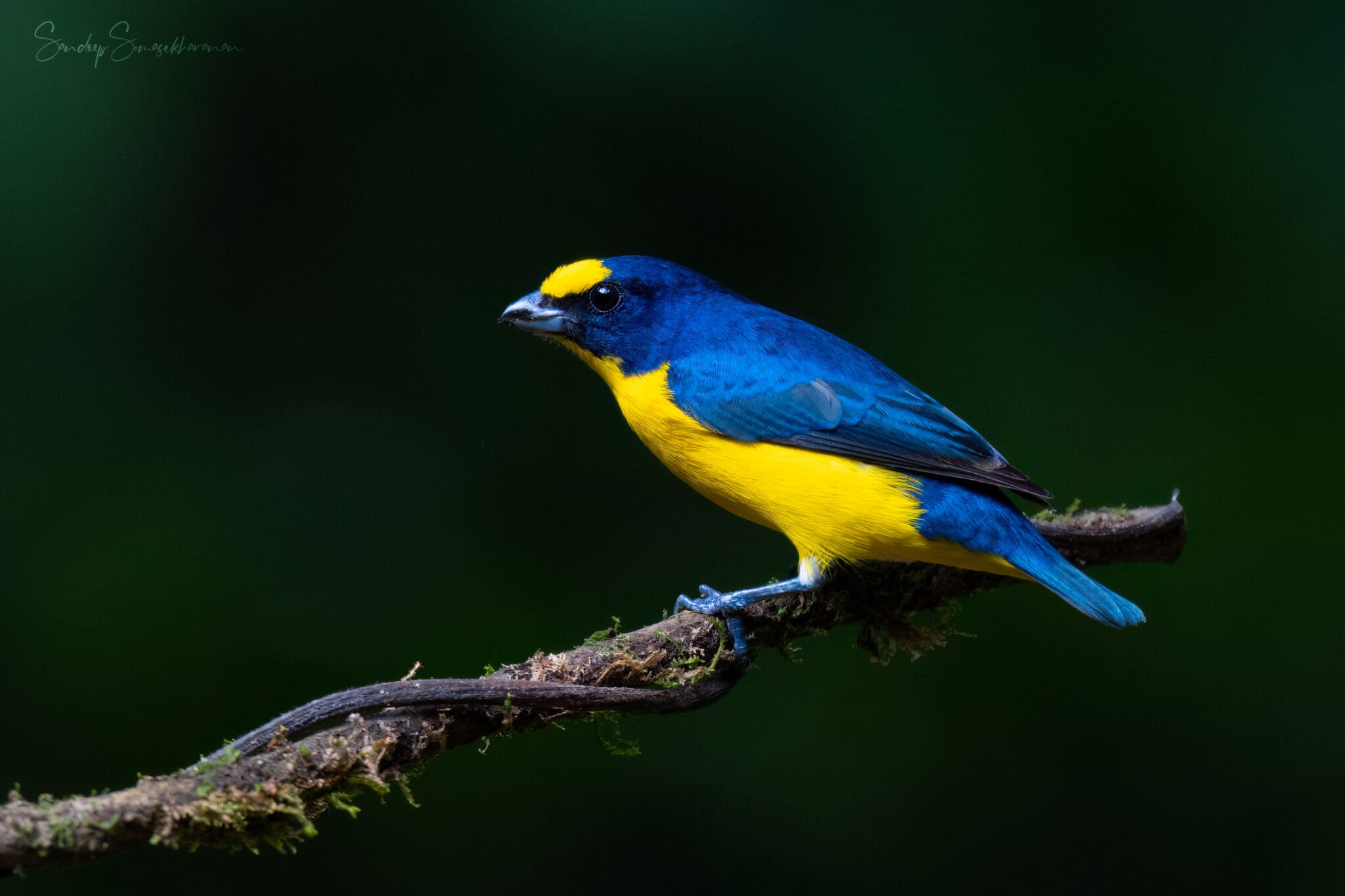
Edward calls us towards the back of the house, and we notice a dinosaur-like bird ambling about in the backyard. It has a yellow wattle around the beak and a hairdo that would seem at home in a pub. “Great Curassow (Crax rubra),” he says. It hops atop a larger feeder in the backyard and enjoys some plantain. Soon, a Collared Aracari (Pteroglossus torquatus), a Keel-billed Toucan (Ramphastos sulfuratus), and a Yellow-throated Toucan (Ramphastos ambiguus) too turn up at the feeder and reward us with some clean shots.


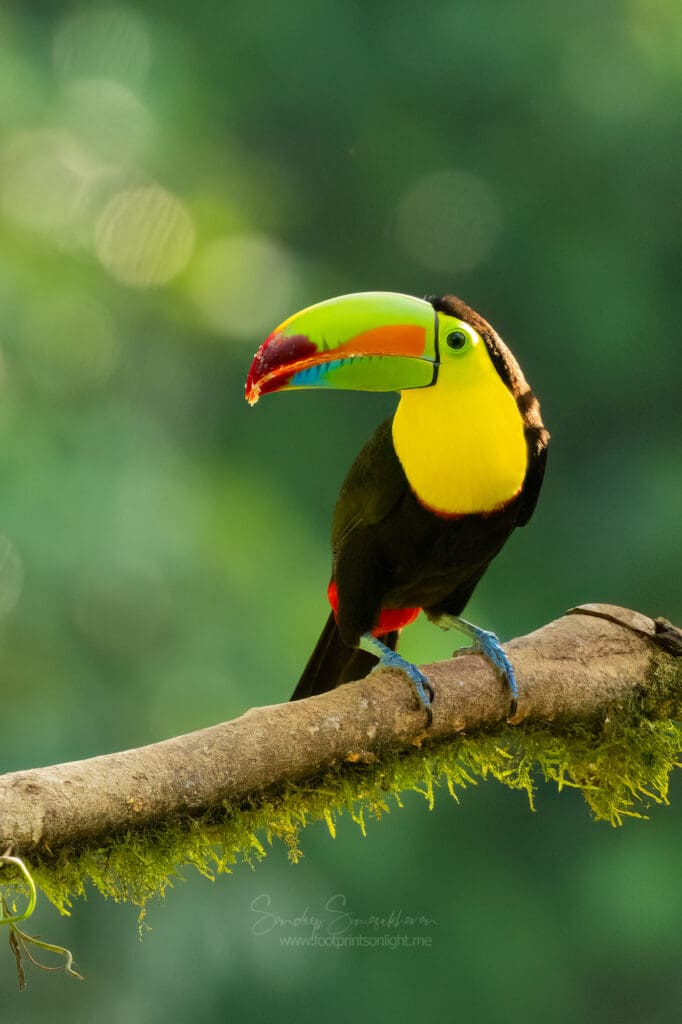
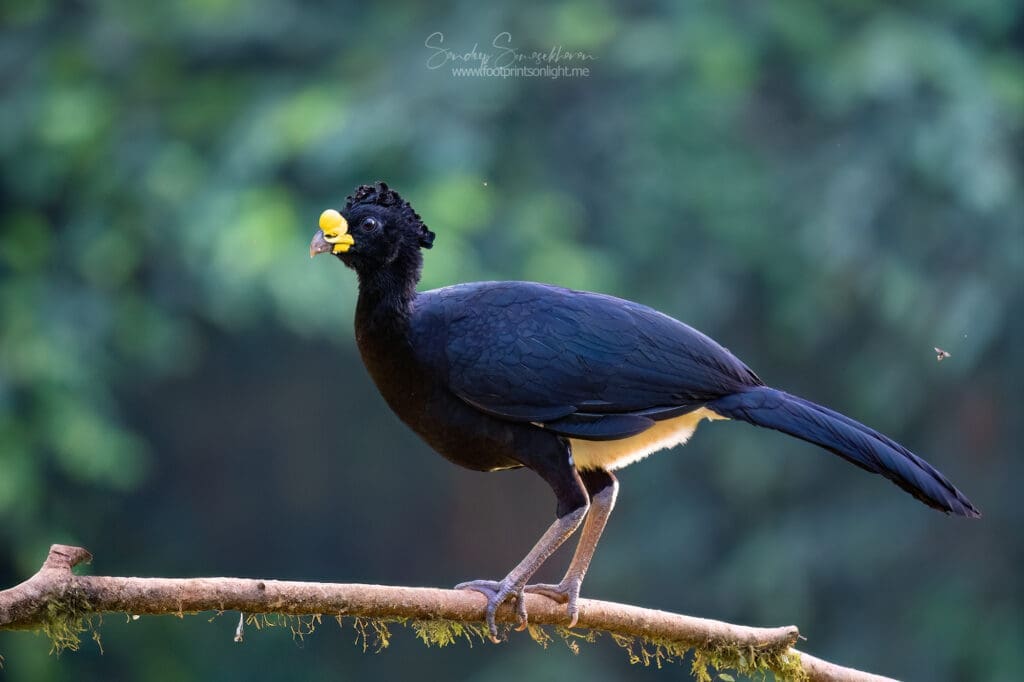
Soon it is my turn at the multi-flash setup. I am not a big fan of flashes, but I am curious to see how this works. The setup is all too convenient. There is a flower with some hummingbird nectar sprayed, set up on a tripod. There are two flashes on either side of the flower which are synced with the camera. The shutter speed of the camera is set quite low, but the flashes would briefly illuminate the bird giving an illusion of freezing motion. There is a green flex board that is hung in the background which gives the illusion of a shallow depth of field. This is as spurious as nature photography gets. Still, I spend some time there and get a Long-billed Hermit (Phaethornis longirostris) to sit on the flower along with White-necked Jacobins (Florisuga mellivora) and Rufous-tailed Hummingbirds (Amazilia tzacatl).
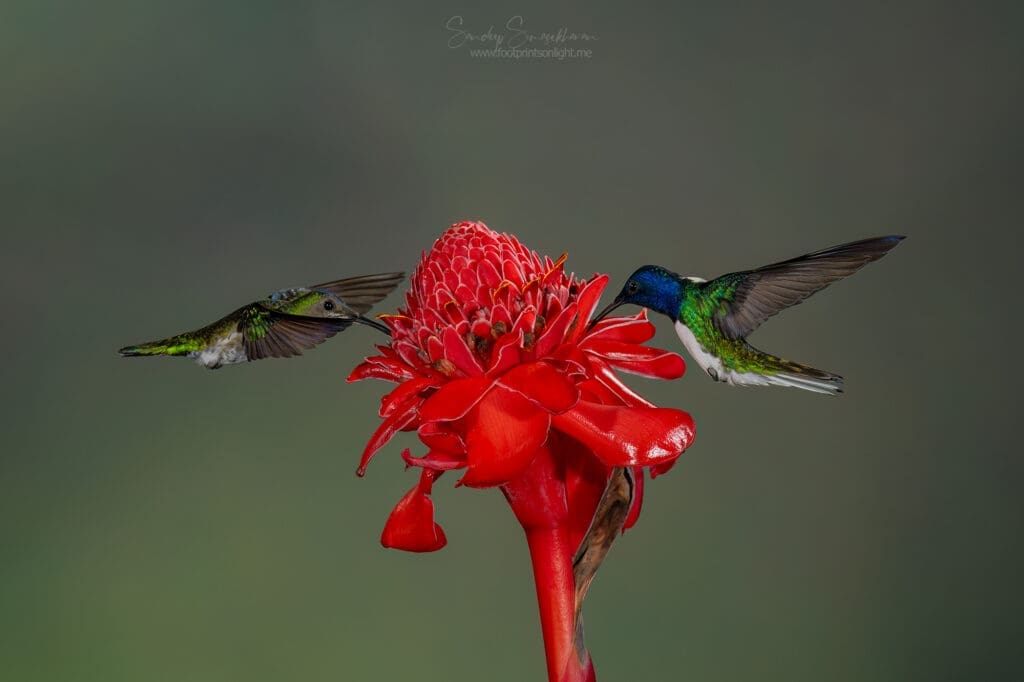
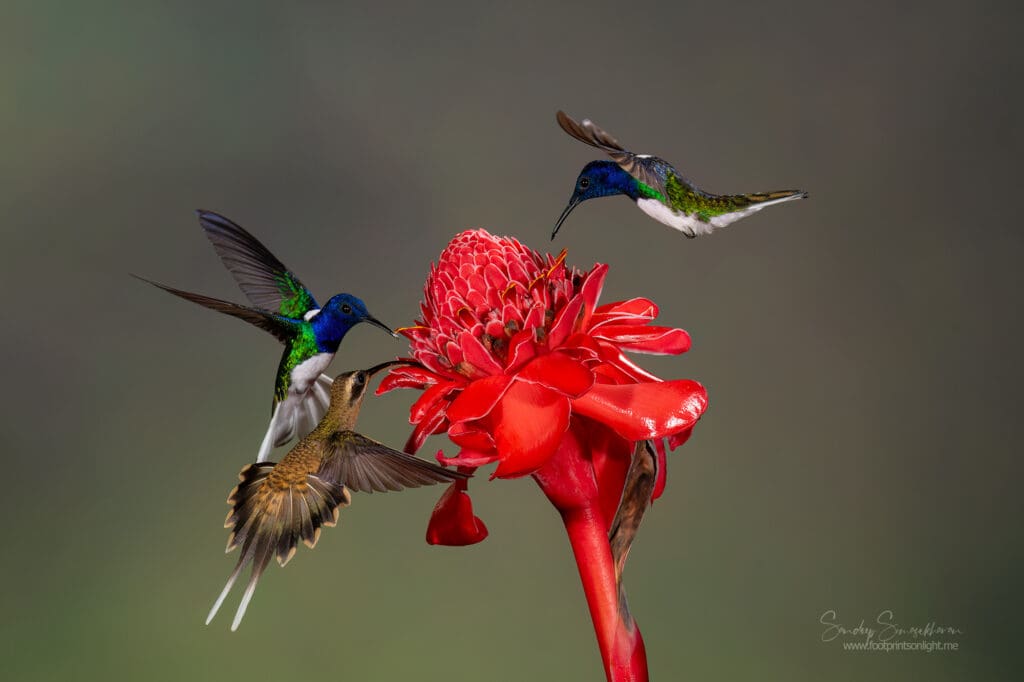



As we are about to wind up, an odd-looking woodpecker alights on the feeder pole. Its red head and body give it the appearance of wearing a skeleton suit for Halloween. I cannot but think of Red Skull from the Marvel movies. The woodpecker, later identified as a Pale-Billed Woodpecker (Campephilus guatemalensis), examines the feeder pole. Murukesh’s mood is low once again as he seems to have misplaced the cover of the flash’s hot-shoe that goes on top of the camera.

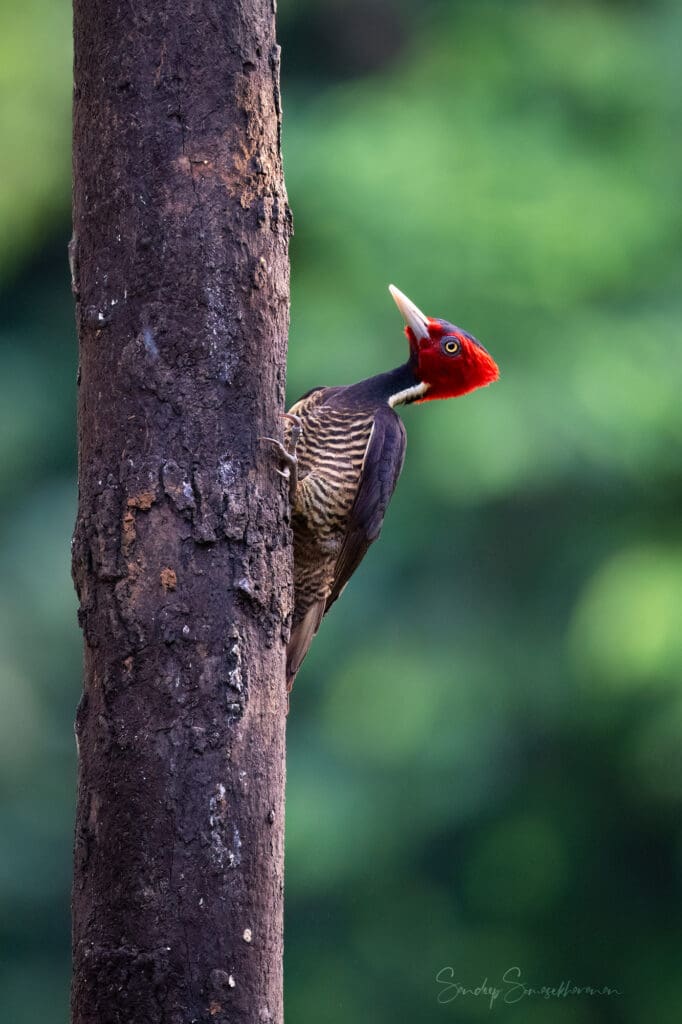
As we head out, we want to tip the owner who let us use his porch, but we don’t find him anywhere. So we call Edward and use Google Translate to tell him “Can you give this money to your friend?” — Google says “amiga” instead of “amigo”, picking the feminine gender, and Orlando and Edward burst into laughter. “Amiga girl. Amigo boy,” corrects Orlando. “She Amiga,” he says pointing to Subha. Then, pointing to us, he says, “You, amigo!”
On our way back we stop at an open field to admire a pair of Northern Jacanas (Jacana spinosa). The light is fading, so we don’t get great shots. A pair of macaws fly overhead against the fiery clouds. It has been another long day of non-stop shooting and we drop Edward off at Boca Tapada where he had parked his dirt bike. “Buenos nachos, amiga,” he teases.

We go back to the rooms, and I get myself another refreshing open-air shower. The days have been a blur. We walk out and get into the van and Orlando takes us to the cafe. The British family is there for dinner, along with some other folks. A different dog shows up at the dinner tables today, and this one is well-mannered as well. It takes a particular liking to me and lies under my feet as I tickle its tummy.
Dinner is once again simple but delicious. There is zucchini salad and zucchini is usually something I wouldn’t be caught dead chewing on. However, this one tastes delectable and I have to stop myself from licking the plate clean. The chicken is well-marinated and perfectly cooked, just like the day before. There’s fried plantain once again and for dessert, they have flan (caramel custard), something I have cravings for every time I hear the name.
We let Orlando take his time with his dinner and stroll down to the cottages. We notice a lounging place that has feeders set up at some interesting spots, halfway down the slope. We agree to come down here after breakfast the next day to see if something turns up to snack on the plantains.
It is official: Costa Rica runs on plantains. And that has fueled us and our hobby for four days now.
- Costa Rica Diaries – Parting Gifts - May 5, 2024
- Costa Rica Day 6 – Resplendent Quetzal: Part Bird, Part God and Full-Time Economy Driver - April 17, 2024
- Costa Rica Day 5 – Toucan Trees and Wild Dreams Coming True - March 22, 2024

